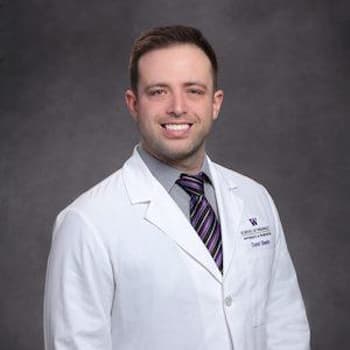PCP is short for phencyclidine, a drug originally designed for use in surgery. PCP was removed from the market and now exists only as a drug of misuse.
PCP is short for phencyclidine, a drug originally developed in the 1950s for use as a surgical anesthetic. The original brand name of PCP is Sernyl. Sernyl became popular because it calmed surgical patients at low doses and paralyzed them at higher doses. Sernyl did not affect blood pressure or breathing, so it had advantages over some other drugs at the time.
Sernyl’s popularity was short-lived, and it was soon found to cause hallucinations and depressed mood long after surgeries were complete. By 1967, PCP had become limited to veterinary use only.
PCP became a party drug in the 1960s and 1970s, often stolen from veterinary offices along with its chemical cousin, ketamine. In 1979, all legal manufacturing of PCP was stopped in the United States.
Treatment Can Be Life Changing. Reach out today.

What Is PCP?
PCP is a dissociative anesthetic drug that causes hallucinations and other psychiatric side effects. PCP is a drug of misuse and has a high potential for addiction. It is rarely taken on its own and is often mixed with other drugs, especially marijuana.
PCP works by blocking several chemicals in the brain that are used to send messages between brain cells. Altering the flow of these chemical messengers changes how a person experiences reality.
What Is PCP Used For?
PCP was originally developed as a surgical anesthetic in the 1950s. It quickly fell out of favor because many people reported negative side effects like loss of memory, dysphoria (depressed mood) and hallucinations.
Currently, PCP has no medical uses in the United States. It has not been manufactured since the 1970s, and the only way to obtain it is through illicit means.
What Is Phencyclidine Classified As?
PCP is a Schedule II drug according to the Drug Enforcement Agency (DEA). A Schedule II drug has recognized medical uses but a high potential for addiction and misuse.
Even though PCP is no longer used for any medical purpose in the United States, it has retained its Schedule II status.
Administration
PCP use can occur in different ways, including:
- Injected (intravenous, or IV)
- Taken orally (by mouth)
- Smoked
- Snorted
Smoking is the most common method of misusing PCP. Leafy material like marijuana, tobacco or mint is dipped into liquid PCP. Marijuana or tobacco cigarettes that have been dipped in liquid PCP are called “wets” or “dippers.” A typical dose dissolved into a cigarette is 5 mg to 10 mg.
What Does PCP Look Like?
PCP is a white, crystalline powder. It dissolves easily in water and ethanol (alcohol). Liquid PCP is usually yellowish-clear to yellowish-gold in appearance. It may be kept in dropper bottles for easy application to cigarettes.
PCP Street Names
Some of the most common street names for PCP include:
Angel dust: Powdered white form of PCP
Supergrass: Marijuana cigarettes dipped into liquid PCP
Shermans: Also known as “sherms,” these are tobacco or marijuana cigarettes dipped in liquid PCP
Zoom: Another term for powdered PCP
PCP Side Effects
A small dose of PCP is 5 mg to 10 mg and a deadly dose is above 25 mg. Therefore, even small increases in the dose can cause serious harm. PCP at any dose is toxic, but medium to high doses are particularly dangerous.
Symptoms of PCP intoxication have been known to come and go unpredictably. For example, a patient may be combative towards hospital staff and then suddenly fall into a coma. Doses above 25 mg can cause:
- Bizarre postures (body positions)
- Coma
- Convulsions and seizures
- Death
- High temperature or fever
- Muscle contractions
- Stupor (appearing almost asleep)
How Long Does PCP Stay in Your System?
The desirable effect of PCP happens about one to three hours after the drug is ingested. However, the drug remains in the body long after the effects have worn off.
The PCP half-life is about three days, meaning it takes 15 days for the body to completely remove PCP. Different types of drug tests can detect the presence of PCP in the system for varying lengths of time. These include:
- Blood: PCP is not measurable in the blood after a few hours, even though it can stay in the body for days. Blood tests may be used in emergency room settings to assess intoxication, but urine tests are much faster and less expensive.
- Urine: PCP is detectable for five days after a single use and up to 30 days for chronic users.
- Hair: PCP can be detected in the hair for around 90 days. Any substance in the blood is deposited into hair follicles in small amounts. Therefore, PCP will stay locked in the hair permanently after use. Hair tests can measure 90 days because they use about three months of hair growth, or 1.5 cm.
- Breast milk: A few cases have been reported of PCP passing into breast milk. In these cases, the breast milk of each woman had detectable PCP 42 days later.
Is PCP Addictive?
PCP has a very high potential for misuse and addiction potential. Currently, PCP is not a common drug of misuse in the United States. It is more commonly mixed into party drugs like ecstasy without the user being aware of its presence.
The risk of PCP lies more in the harmful effects on health than the addiction potential. PCP causes poisoning in even small doses and can negatively impact important organs like the brain, heart and kidneys.
If you or someone you know is struggling with PCP use or addiction, The Recovery Village Palm Beach at Baptist Health is here to help. Our team of addiction professionals can help get you into a treatment program that fits your needs. Contact us today to begin the path to a healthier, drug-free life.





